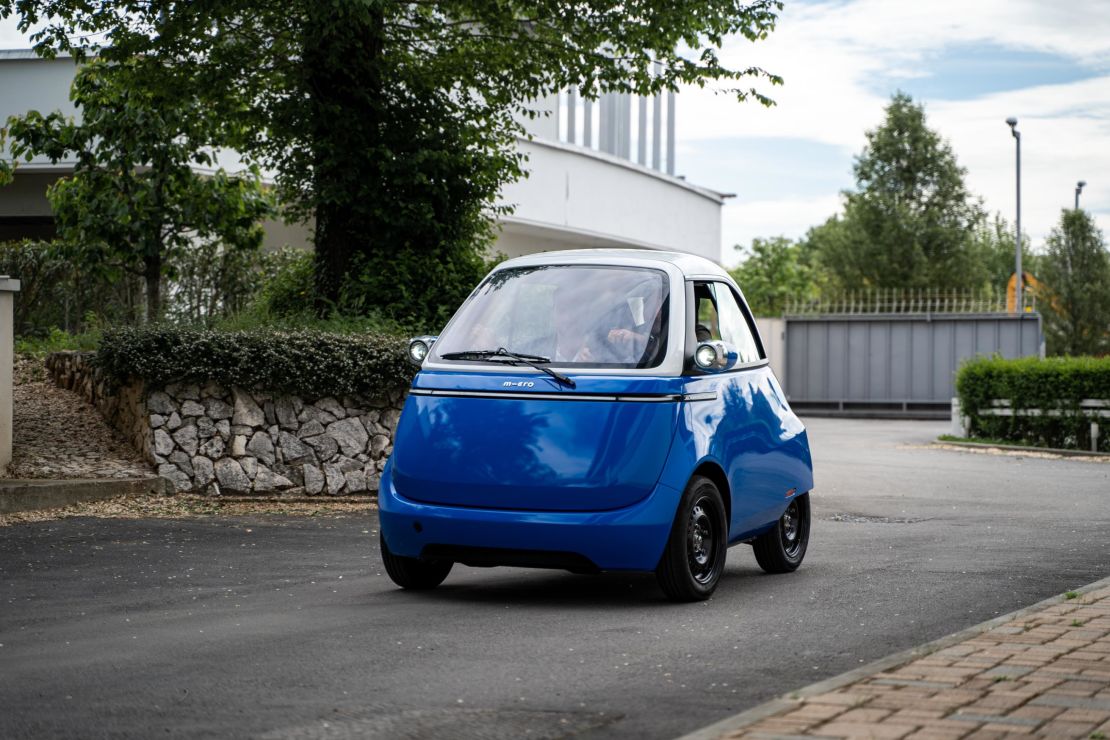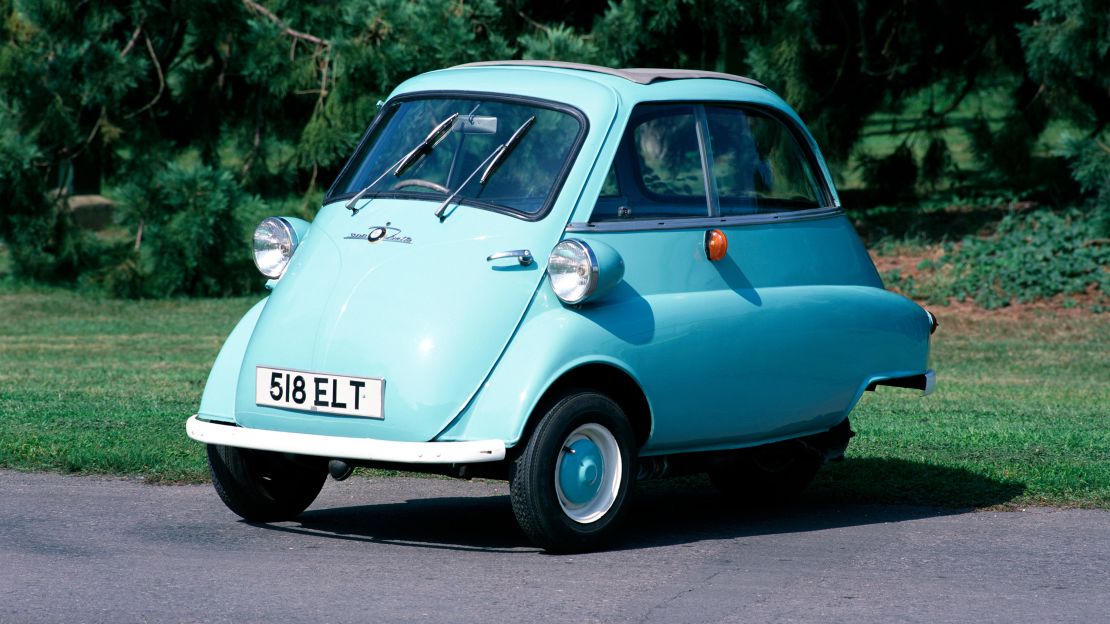Cities around the world are taking steps to clear their streets.
Barcelona is developing car-free zones and New York is scaling up its car-free days. London is planning to expand the boundaries of a low emission zone and Beijing has a license plate lottery to decide who is allowed to drive. Local authorities complain that cars are too large, too dirty and too dangerous for modern cities.
Microcars might go some way to addressing those concerns without requiring the comfort sacrifice.
The Solar City Car from Dutch startup Squad Mobility is unlikely to cause many serious accidents with a top speed of 43 miles per hour (70 kilometers per hour) for the fastest of its two models and a weight of around 350 kilograms. Neither the solar panel on its roof nor its electric batteries will contribute to city smog. Three of them – and up to 12 passengers – can fit in a regular parking space.
It’s for shopping, taking the kids to school, social visits and all these little trips,” says Squad MobIlity CEO Robert Hoevers. “And they equate to 70 to 80% of the mobility needs of the average person.”
The Solar City Car recently launched for pre-orders from €6,250 (about $6,100) and joins a rapidly expanding field of micro cars. The Swiss Microlino, which is turning heads with its retro-futurist design, is reportedly increasing production from 500 vehicles this year to 5,000 in 2023. US-Chinese venture Eli has sold its first editions of the Zero model in Europe and is preparing to launch in the US. French giant Citroen released its first microcar, the AMI, in 2020 and has developed several variants since.

Tilting through traffic
Micro design can offer novel benefits. The three-wheeled Nimbus One promises to allow drivers to cut through traffic jams using its patented tilting technology. “We’re small enough to go in between cars,” says Nimbus founder Lihang Nong. “It actually tilts in a corner and that allows us to keep the footprint of the vehicle very narrow.”
The field is loosely defined. By convention, microcars weigh less than 500 kilograms – the Nimbus One comes in at 330 kilograms – and have a maximum speed of around 50 miles per hour (80 kilometers per hour). This allows them to come under different classifications to regular cars with less onerous tax and regulation demands.
The Citroen AMI is classified as a quadricycle and can be driven without a license by 14-year-olds in some European countries. As the cars do not produce emissions they are not subject to low-emission zones.
Tiny cars have a long history and several of the new models pay tribute to their predecessors. The Microlino is inspired by the much-loved but short-lived BMW Isetta – a “bubble car” produced in the 1950s.

But while previous iterations floundered there are positive indications that this generation of microcars is here to stay. Transparency Market Research has projected strong growth figures and a field worth $12.7 billion by 2030. Citroen claimed to have received more than 1,000 reservations for the AMI within two weeks of its UK launch.
“I think this is starting to catch people’s eyes and has a lot of potential to grow,” says David Zipper, a mobility specialist at Harvard Kennedy School. “Cities are reducing the amount of space for cars … and that is a tailwind for microcars.”
A thrilling commute
Microcars are also cheaper to charge than larger electric vehicles as they don’t require as much juice, adds Zipper, and models that don’t require full driving licenses lower the bar to access.
There is scope for vehicles to become more specialized for urban spaces, says Oliver Bruce, co-host of the Micromobility podcast. “I think a lot of cars are now over-serving for what we need,” he says. “Often you only need one seat … and to move from one part of a city to another in relative comfort. That’s where I can see the rise of these dedicated vehicles.”
Bruce also cites improvements in manufacturing techniques that have enabled more nimble designs. “The range for microcars would have been terrible if you had to build them using technology from even 10 years ago,” he says. “You would have needed a large electric car to hold enough batteries.”
Such advances have also helped makers to bring down costs. When Smart launched an electric two-seater in 2015 the price tag was $15,400, comparable to traditional cars with far greater range and speed. Many of the new models are on sale for well below $10,000.
Companies are further lowering the bar to access by making their models available for rent. Nimbus offers the option of leasing their microcar for $200 a month. Hoevers envisages the Solar City Car finding many of its customers through sharing platforms as a short hire option.
Manufacturers are also aiming to serve businesses as well as individual users, and fulfill some of the functions performed by conventional cars. Citroen has developed a microcar for delivery drivers.
Microcar entrepreneurs have another trick up their sleeve: a pleasure differential. Novel designs such as the space pod-style Microlino or the motorcycle-inspired Nimbus One promise drivers a thrilling ride relative to the standard commute. City dwellers usually travel for five to 20 kilometers a day, according to Squad Mobility’s research. Could that be made more of a pleasure than a chore?

“Miniature vehicles can be a lot of fun to drive and operate,” says Zipper. “That is part of the appeal.”
However, microcars might need cities to evolve around them to succeed, Bruce suggests. They would benefit from more infrastructure for electric vehicles and further restrictions on conventional cars, as sharing the road with much larger vehicles could present safety concerns.
There is also the challenge of overcoming popular resistance to change and accepting a transition to slower vehicles with shorter ranges. But there is confidence among manufacturers that declining prices and increasing exposure can help to break down perceptual barriers.
Crucially, attitudes within the car industry and among investors are becoming more favorable towards microcars, says Bruce. If there are hits among the new releases, then many more might be joining them on city streets.
















